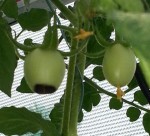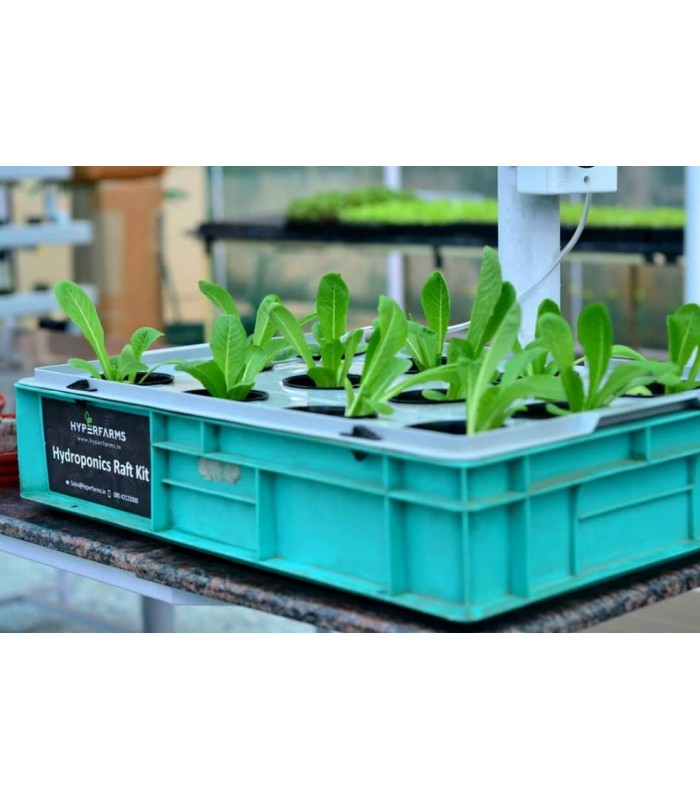Blossom End Rot
Blossom End Rot on tomato plant is every gardener’s nightmare. After all the hard work for sowing, transplanting and growing a tomato plant, the last thing one wants to see is their harvest rotting away. Blossom end rot in tomatoes can be quite disheartening as it can lead to severe loss in production of marketable fruits. Blossom end rot is not only specific to tomato, it can affect many vegetable plants such as Pepper, Eggplant, cucurbits etc. Blossom End Rot is abbreviated as BER.
What is Blossom End Rot

Picture of Tomato with Blossom End Rot
Blossom end rot is a condition in where one end of the fruit that is far from the stem develops a black lesion and rots away. There are two sides to a fruit. One is the stem end and the blossom end. The stem end is one where the fruit is attached to a plant via a stalk. The end opposite to stem end is blossom end. Because the rot happens in the blossom end, this condition is called a blossom end rot. Shortly known as BER.
While this article focuses on tomato blossom end rot, BER is not specific only to tomatoes.
What causes Blossom End Rot
Blossom end rot can occur due to several reasons. The primary reason why blossom end rot happens is due to calcium deficiency. Calcium is an important component of cell walls in plants. Primary responsibility of calcium in plants is development of cell walls. Calcium is abundant in the skin of the fruits. So what happens if there is a calcium deficiency? The skin stops to develop. When the skin stops developing, the fruit pulp inside is unprotected and hence it rots. Its as simple as that.
Why Calcium Deficiency occurs
Calcium deficiency is a situation where the plant’s calcium requirement can’t be fulfilled by the nutrition supplied. Before we delve into reasons why calcium deficiency occurs, it is important that we understand, how plant absorbs and uses calcium.
Mobile and Immobile Elements
There are two kinds of nutrient elements in plant nutrition. Mobile and Immobile element. Mobile elements are those that freely move once inside the plant. Nitrogen is a mobile element. It is moved to the leaves and the stem. As the plant grows, the nitrogen from older leaves are transported to newer leaves should a deficiency occur. Since the movement of nitrogen is possible anytime, the element is classified as mobile.
Immobile elements are those that don’t move once they stored in a part of the plant. Calcium is an immobile element. Calcium moves only through water transport in the plant. Wherever water goes, calcium goes. Just remember this, it will help us in understanding how calcium works inside a plant. Imagine Calcium as a boat. A boat cannot move without water.
There are multiple reasons why calcium deficiency can occur. They are below
Lack of calcium in the soil
If there is no calcium in the potting soil or the soil in which the plants are planted, then calcium deficiency can occur. Most of the times, the soil has enough calcium and also the water that we use for irrigation has calcium in it. A portion of the calcium in the irrigation water, depending on what form it is available to the plants. But if there is no calcium in the soil or the water, calcium deficiency can occur.
Irregular watering
Wherever water goes, calcium goes. Remember? If you don’t water the plants regularly or when they need it, the plants are gonna suffer. What this means in terms of calcium transport is, that the calcium is not moved properly to the parts of the plants that need calcium. Though there is calcium in the soil, minerals can only be absorbed if they are in the soluble form. If there is no proper watering, then the movement of calcium is hindered causing blossom end rot. Calcium absorbed by the roots move inside the plant through the xylem vessel only. The movement is calcium is closely linked to movement of water. Water wisely and avoid blossom end rot.
Environmental reasons
To understand this, we need to understand how plants absorb water from the roots. What makes a plant pull the water from the roots to the upper parts of the plants. This movement of water is effected by a process called Transpirational pull. The leaves that are exposed to the sun, allow water to evaporate from their leaf surface through a process called Transpiration. The transpiration results in water being pulled up from the roots. If there is no transpiration due to the following, then water movement is affected there by arresting calcium movement.
- High humidity
- Low root zone temperature
Sometimes, higher rate of transpiration in leaves can cause all the calcium to be diverted to the leaves leaving nothing for the fruit that needs calcium.
Competing elements
Calcium is not the only element plants need. Calcium is just one of 16 elements plants require for a healthy growth. It is possible that sometimes the one of more of the elements are present in higher proportion than required. Say for example, Potassium, Magnesium and Ammonium can compete with calcium uptake. So even if any one of potassium, magnesium or ammonium are present in higher quantity, the calcium uptake is hindered. When you see BER in this scenario, it doesnt mean that calcium is absent in your soil, but another competing element is little too much.
Soil pH
BER can occur if your soil pH is out of optimum range. If the soil pH becomes too low, the calcium becomes unavailable to the plants. Maintain the pH between 5.5 to 6.5.
How to control blossom end rot
Controlling and treating blossom end rot is possible by taking the right measure. Those fruits that have contracted the rot cannot be recovered. Those fruits can be removed as they don’t add any value and in fact they drain the energy into making a fruit that is not consumable or marketable.
Follow these steps to control blossom end rot.
- Enrich the soil – Ensure the soil has the right amount of calcium required for the crop. This can be done by soil test. You can use dolomite lime, eggshells, bonemeal to enrich the soil and restore the calcium levels in it. Spray of calcium on the leaves can also control the deficiency much faster. Make the right potting mix.
- Water regularly – Water the plants at the right interval without fail. Keep a schedule for watering and stick to it. Make sure the soil doesn’t dry out during the hotter parts of the day.
- Use right fertilizer – By using the right fertilizer for the crop, competition between elements can be avoided. Use a fertilizer that is meant for the crop and its current stage. Excess potassium and nitrogen usually causes BER. Pay attention to what fertilizer you are applying.
- Right planting time – Paying attention to right planting time can eliminate problems due to high and low humidity. Greenhouse growers can control the humidity to acceptable levels.
- Right variety – All varieties of tomatoes are prone to this problem. However some varieties are drought tolerant and hardy. Choose a variety that suits to your weather conditions and stick with the one that performs well.
If all the steps are followed, blossom end rot is easy to control and it can be prevented from coming again too.
Watch this video on Blossom End Rot.






One response
Hi. Thanks for this excellent article. We grew tomatoes last season, and did face this problem. But had no clue what was causing this. In our case it was irregular watering. Now I know! Thanks a lot.